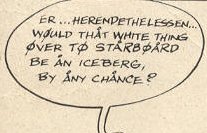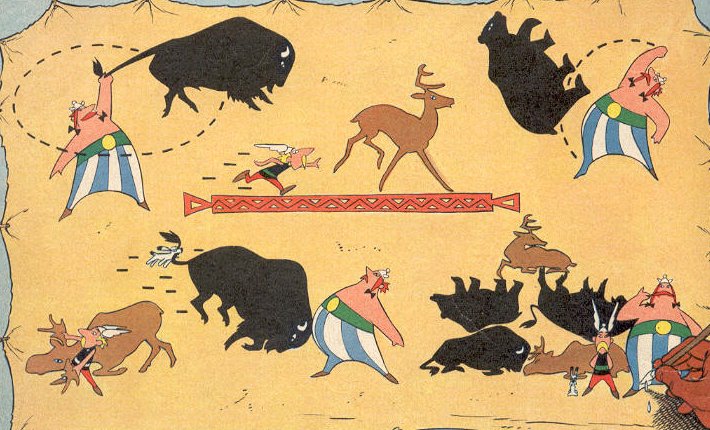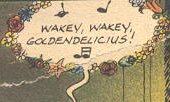Another clever trick in the Asterix comics is their use of different fonts, characters or speech bubbles to indicate people speaking different languages.
Table 5.1. Language and fonts
| Language | Speech / Font |
|---|---|
| Goth |
Gothic font (what else did you expect ;-)
 Example of typography used for Gothic speech
|
| Greek | Pointy letters - like the Greek alphabet. There was no 'v' sound in
classical times. 'y' is still pronounced Upsilon in German.
 Example of typography used for Greek speech
|
| Iberian | upside-down '¡' and '¿' used as punctuation in the beginning of sentences similar to
punctuation used in real Spanish.
 Example of typography used for Iberian speech
|
| Egyptians | Mock hieroglyphics
 Example of typography used for Egyptian speech
|
| Romans |
Printed / Engraved Roman script (like the Mansion of the
Gods brochure in
the book of the same name) always substitutes 'V's for 'U's. Because the
Roman alphabet does not have a 'U'. 'V' was used for both 'U' and 'V'.
Just like 's' in English has two sounds (as in "rose" and "sun"). This has
survived in official print in Italy. The Italian coins are marked
'Repvbblica Italiana' for Italian Republic. Also see entry on Greek.
 Example of typography used for Roman engravings
|
| Vikings | Ø, Å and other typical Scandinavian accented characters.
Note that the Gauls with a bad Viking accent use backward slashes and squares
(instead of circles).
 Example of typography used for Viking speech
|
| North American Indians - Native Americans | Pictures?
 Example of typography used for Native American writings
|
Table 5.2. Mood and typography


